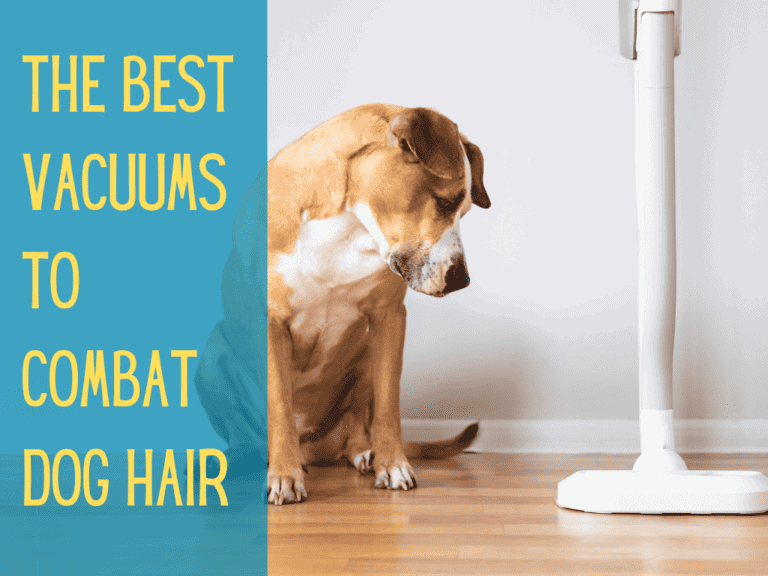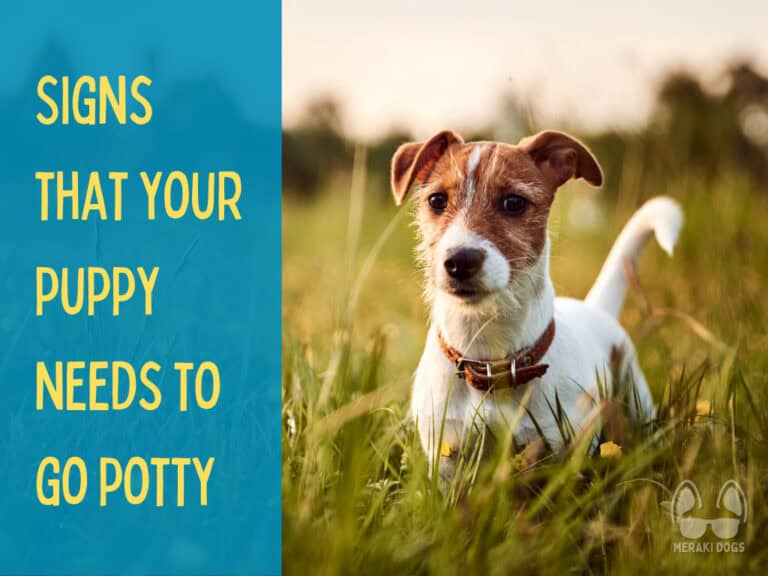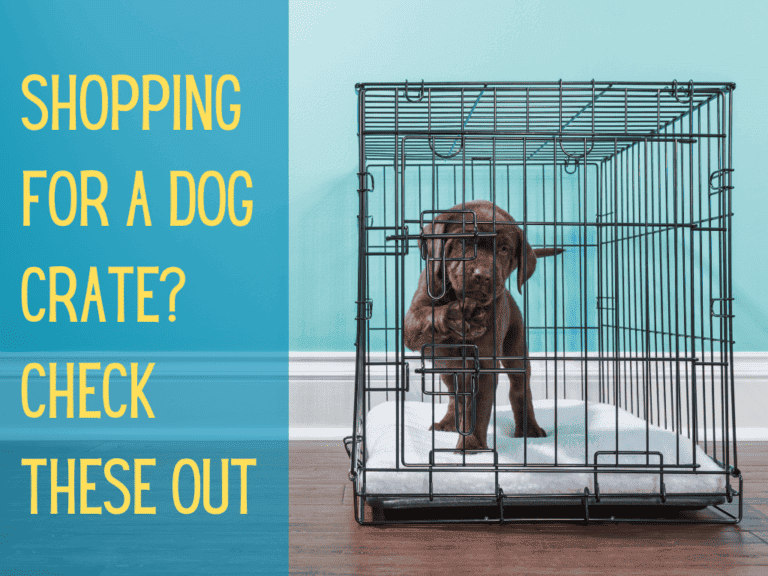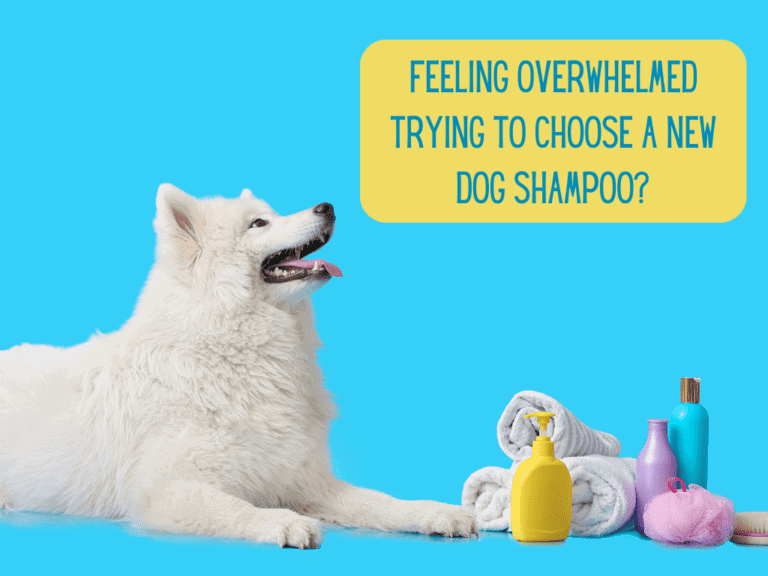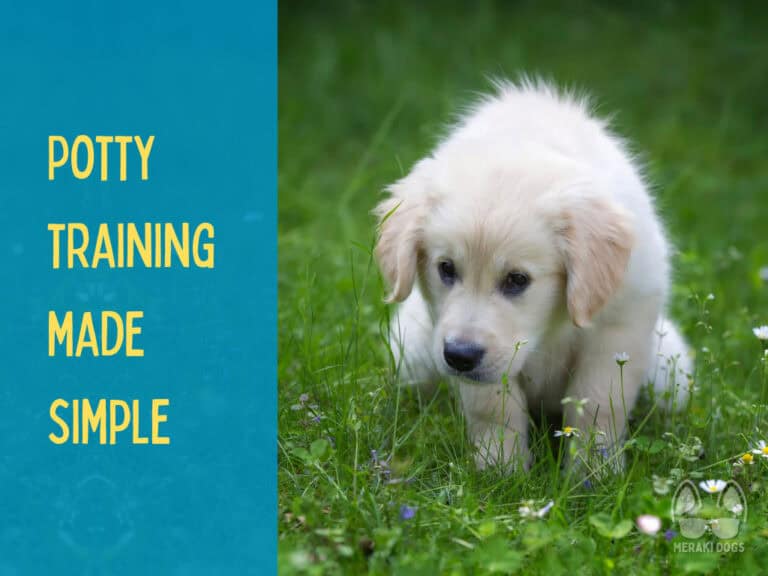New Puppy Checklist: 40 Must-Have Items for Your Pet

Meraki Dogs may earn a small commission when you buy through links on this site at no cost to you. See our disclaimer here.
Congratulations! You’re about to bring home a new puppy, which means endless cuddles, adorable zoomies, and… a whole lot of responsibility. Puppies don’t come with an instruction manual, but if they did, the first chapter would be about preparing your home with everything they need.
Without the right supplies, those first few weeks can be chaotic. Picture this: your new puppy is chewing on your furniture, peeing on the rug, and refusing to sleep—and you’re scrambling to figure out what’s missing. Sounds stressful, right?
That’s why I’ve put together this ultimate New Puppy Checklist—to help you stock up on all the essentials before your pup even sets a paw in the door. This way, you’ll be fully prepared for training, playtime, and those inevitable messes.
Key Takeaways
- A New Puppy Checklist ensures you’re prepared with all necessary supplies.
- Essentials include food, training tools, grooming items, and home setup gear.
- Investing in the right products early prevents stress and costly mistakes later.
- Proper preparation makes puppy training, health, and safety easier.
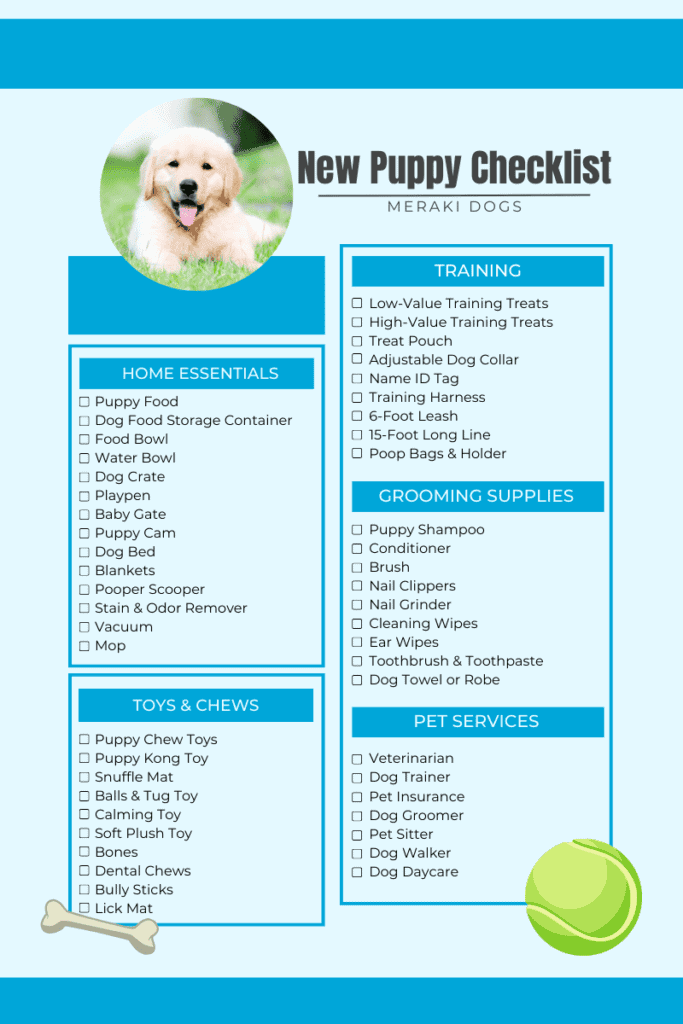
New Puppy Checklist: Everything You Need
Here’s everything you need before bringing your puppy home:
Puppy Food and Storage
1. Puppy Food
What to Look For:
- High-quality protein (chicken, beef, fish) to support muscle growth.
- Healthy fats (salmon oil, flaxseed) for brain development.
- No artificial colors, preservatives, or fillers (avoid corn, wheat, and soy if possible).
Pro Tip: Puppies grow fast and have different nutritional needs than adult dogs. Check if your chosen food is AAFCO-approved for puppy growth.
Should You Switch Foods?
Many breeders and rescues send puppies home with a starter bag of food. If you decide to switch, do it gradually over a week:
- Day 1-2: 75% old food, 25% new food
- Day 3-4: 50% old food, 50% new food
- Day 5-6: 25% old food, 75% new food
- Day 7: 100% new food
This prevents stomach upset (trust me, you don’t want to deal with puppy diarrhea).

Recommended by Pet Pros
Wellness Puppy Food
2. Dog Food Storage Container
Why It’s Important:
- Prevents spoilage by keeping air, moisture, and pests out.
- Keeps food fresh and crunchy (stale kibble loses nutrients).
- Reduces the risk of contamination (some plastics can leach chemicals).
What to Look For:
- Airtight seal to maintain freshness.
- BPA-free plastic or metal (safe for food storage).
- Large enough to hold a full bag of food (so you’re not constantly refilling).
Pro Tip: Don’t just pour kibble into the container—keep it in its original bag inside the container. This helps preserve the expiration date and prevents oils from sticking to the container.

Recommended by Pet Pros
IRIS Airtight Container
3. Food & Water Bowls
Your puppy will be eating and drinking several times a day, so bowl selection matters!
What’s the Best Material?
✅ Stainless steel – Durable, dishwasher-safe, and bacteria-resistant.
✅ Ceramic – Heavy, non-toxic, but can break if dropped.
🚫 Plastic – Scratches easily, harboring bacteria and odors.
Size & Shape:
- Small puppies need shallow bowls to reach their food easily.
- Large breeds may benefit from raised bowls for better digestion.
- Slanted or slow-feed bowls prevent gulping and choking.
Pro Tip: Always have fresh water available—especially during hot months! Some puppies love to splash in their water, so a non-tip bowl may save you some cleanup.

Recommended by Pet Pros
Peggy11 Stainless Steel Nonslip Bowls
Essential Puppy Home Management
Bringing a new puppy home means creating a safe, comfortable space where they can eat, sleep, and play without getting into trouble. The right setup will prevent accidents, protect your belongings, and make training easier.
4. Dog Crate
A crate provides a secure space for your puppy to sleep and relax. It also plays a huge role in house training by teaching your puppy to hold their bladder, as dogs naturally avoid soiling their sleeping area.
How to Choose the Right Crate:
- Size Matters: The crate should be big enough for your puppy to stand, turn around, and lie down comfortably. Avoid oversized crates, as they may encourage accidents in one corner.
- Adjustable Dividers: If you have a growing puppy, a crate with a divider allows you to expand the space as they grow.
- Ventilation & Safety: Look for sturdy crates with good airflow. Metal wire crates are great for training, while plastic airline-style crates can feel cozier.
Training Tip:
Introduce the crate gradually. Make it a positive experience by feeding meals inside, adding a soft bed, and tossing in a few treats. Never use the crate as punishment, or your puppy may resist going inside.

Recommended by Pet Pros
Diggs Dog Crate
5. Exercise Pen / Playpen
A playpen gives your puppy more space than a crate while keeping them contained when you can’t supervise them.
Benefits of a Playpen:
- Prevents chewing on furniture, shoes, and electrical cords.
- Keeps your puppy safe while you’re busy with work or household tasks.
- Provides a designated area for toys, a bed, and water.
Choose a sturdy, adjustable pen that won’t tip over easily. Avoid placing puppy pads inside, as this can create an indoor potty habit that’s hard to break.

Recommended by Pet Pros
North States MyPet Play Yard
6. Puppy Gates
If you don’t want your puppy roaming freely around the house, a puppy gate is a must. Gates help block access to hazardous areas, such as staircases, kitchens, or rooms with fragile furniture.
What to Look For:
- Adjustable width to fit different doorways.
- Narrow bar spacing to prevent small puppies from squeezing through.
- Pressure-mounted or hardware-mounted options depending on your needs.
Some puppies are determined climbers, so if yours keeps scaling the gate, consider a taller model with a secure latch.

Recommended by Pet Pros
Cumbor Pet Gate
7. Puppy Cam
A puppy camera allows you to check in on your new pet when you’re away from home. This is especially useful for working owners or anyone leaving their puppy alone for short periods.
Features to Consider:
- Two-way audio so you can talk to your puppy.
- Night vision for clear monitoring at any time.
- Treat-dispensing capabilities for interactive play.
While a puppy cam won’t replace proper supervision, it provides peace of mind when you’re not around.

Recommended by Pet Pros
Furbo Dog Camera
8. Puppy Bed
Your puppy needs a comfortable place to sleep and rest. While some puppies love to curl up, others prefer to sprawl out, so choose a bed that fits their sleeping style.
What to Look For:
- Soft but supportive cushioning to protect growing joints.
- Machine-washable covers for easy cleaning.
- Durable materials that can withstand occasional chewing.
Some puppies take a while to settle into their bed, so placing a soft blanket or a stuffed toy inside can make it feel cozier. If your puppy is a heavy chewer, consider a chew-resistant bed.

Recommended by Pet Pros
Round Calming Puppy Bed
Puppy Training and Outdoor Adventures
Training starts the moment your puppy arrives home. The right tools will make teaching good behavior easier while keeping your puppy safe on walks and outings.
9. Dog Training Treats
Treats are the fastest way to grab your puppy’s attention during training. The right treats should be small, soft, and high-value—meaning something extra tasty that your puppy doesn’t get all the time.
What to Look For:
- Small and easy to chew, so your puppy can eat them quickly and stay focused.
- Made from real meat or other high-quality ingredients.
- No artificial additives, preservatives, or fillers.
Vary the treats you use to keep your puppy engaged. If they start ignoring treats, it may be time to switch flavors or textures.

Recommended by Pet Pros
Fruitables Dog Treats
10. Treat Pouch
A treat pouch keeps your rewards within easy reach, allowing for fast reinforcement during training.
Why You Need One:
- Prevents fumbling for treats in your pockets.
- Keeps treats fresh and free from lint or dirt.
- Allows for hands-free access, so you can focus on handling your puppy.
Look for a pouch with multiple compartments if you want to carry different types of treats or small training accessories.

Recommended by Pet Pros
Paw Lifestyles Treat Pouch
11. Adjustable Collar
Your puppy’s first collar should be lightweight and adjustable to accommodate their rapid growth.
Choosing the Right Collar:
- Should fit snugly but allow two fingers to fit between the collar and your puppy’s neck.
- Made of soft, durable material to prevent irritation.
- Consider a breakaway or quick-release buckle for safety.
Some puppies outgrow their first collar within weeks, so check the fit regularly and adjust as needed.

Recommended by Pet Pros
Joytale Reflective Dog Collar
12. Name ID Tag
An ID tag is your puppy’s first line of defense if they ever get lost. Even if your puppy is microchipped, a visible tag makes it easier for someone to contact you immediately.
What to Include on the Tag:
- Puppy’s name (optional, some owners prefer to leave it off for security reasons).
- Your phone number.
- A backup number (like a family member or vet).
Some modern ID tags include QR codes that store additional details about your puppy’s medical history and contact information.

Recommended by Pet Pros
Slide-On Custom Pet Tags
13. Training Harness
A harness reduces strain on your puppy’s neck, especially for excitable or strong pullers.
What to Look For:
- A Y-shaped harness that allows natural movement.
- Adjustable straps for a secure fit as your puppy grows.
- A comfortable, padded design that won’t chafe.
Avoid restrictive no-pull harnesses that force the shoulders inward, as they can interfere with natural gait development.

Recommended by Pet Pros
PupTeck Soft Puppy Harness
14. Microchip
A microchip is a permanent form of identification implanted under your puppy’s skin. If your puppy gets lost, a vet or shelter can scan the chip and retrieve your contact information.
Key Points:
- Microchipping is a quick and relatively painless procedure.
- Make sure to register the chip with your current contact details.
- Some microchips include GPS tracking, but most only store ID information.
If your puppy isn’t already microchipped, ask your vet to do it at their first check-up.
15. 6-Foot Leash
A standard 6-foot leash gives your puppy enough freedom to explore while still allowing you to maintain control.
Choosing the Right Leash:
- Nylon leashes are lightweight and durable.
- Leather leashes soften over time and provide a comfortable grip.
- Avoid retractable leashes for young puppies—they encourage pulling and reduce control.
A leash with a reflective strip adds visibility during nighttime walks.

Recommended by Pet Pros
MayPaw Rope Dog Leash
16. 15-Foot Long Line
A long line is essential for recall training, allowing your puppy to roam while still being safely tethered.
Why You Need One:
- Great for practicing commands in open spaces.
- Helps build a reliable recall without the risk of your puppy running off.
- Allows puppies to explore more freely while keeping them under control.
Start with a 15-foot line, then gradually increase the length as your puppy gets better at coming when called.

Recommended by Pet Pros
Viper Biothane Long Line
17. Poop Bags & Holder
Cleaning up after your puppy is a non-negotiable part of being a responsible dog owner.
Choosing the Best Poop Bags:
- A convenient bag holder clips onto your leash, so you’re never caught without one.
- Biodegradable options help reduce environmental impact.
- Thick, leak-proof material prevents messes.

Recommended by Pet Pros
Biodegradable Dog Poop Bags
Puppy Toys & Chews
Puppies explore the world with their mouths, which means they will chew—on everything. The right toys keep them entertained, relieve teething discomfort, and save your furniture from destruction.
18. Puppy Chew Toys
Chew toys satisfy your puppy’s natural urge to gnaw, helping to prevent destructive chewing on furniture, shoes, or even your hands.
What to Look For:
- Non-toxic, durable materials that can withstand sharp puppy teeth.
- Various textures to keep your puppy interested.
- Soft but tough—too hard can damage teeth, too soft won’t last.
Some chew toys are designed to be frozen, providing extra relief for teething puppies. Look for rubber or nylon options that hold up over time.

Recommended by Pet Pros
Kong Puppy Toy
19. Enrichment Toys
Mental stimulation is just as important as physical exercise. Enrichment toys engage your puppy’s brain, preventing boredom and reducing destructive behavior.
Examples of Great Enrichment Toys:
- Puzzle toys that challenge your puppy to figure out how to get a treat.
- Snuffle mats that mimic natural foraging behavior.
- Interactive treat-dispensing toys that keep puppies busy and slow down fast eaters.
Rotate enrichment toys regularly to keep them exciting.

Recommended by Pet Pros
Pet Snuffle Mat
20. Exercise Toys
Physical play helps burn off energy and strengthens the bond between you and your puppy.
Best Types of Exercise Toys:
- Tug ropes encourage controlled play and teach the “drop it” command.
- Fetch balls provide a great outlet for energy—just make sure they’re the right size to avoid choking hazards.
- Frisbees are fun for active breeds that love to chase.
Avoid tennis balls—regular ones can wear down teeth over time. Opt for rubber or fabric-coated balls instead.

Recommended by Pet Pros
ChuckIt! Paraflight Soft Frisbee
21. Calming Toy
Calming toys help puppies settle, especially when adjusting to a new home or sleeping alone for the first time.
Why You Need One:
- Helps ease separation anxiety.
- Provides comfort during crate training.
- Mimics the warmth and heartbeat of littermates.
Some calming toys have built-in heartbeats or heating packs to make them feel more like a real companion.

Recommended by Pet Pros
Snuggle Puppy Heartbeat Toy
22. Soft Plush Toy
While not all puppies are gentle with plush toys, they can provide comfort, especially at bedtime.
Choosing the Right Plush Toy:
- Soft and durable enough to withstand some chewing.
- No small parts like plastic eyes or buttons that could be swallowed.
- Machine-washable for easy cleaning.
Some puppies love carrying a plush toy around as a security object, while others rip them apart in seconds. Monitor your puppy’s behavior to see if plush toys are a good fit.

Recommended by Pet Pros
Outward Hound Hedgehog Plush Toy
Grooming Supplies
Proper grooming keeps your puppy clean, healthy, and comfortable. Starting a routine early makes it easier for your puppy to get used to baths, brushing, and nail trims.
23. Puppy Shampoo & Conditioner
Puppy skin is sensitive, so it’s important to use a mild shampoo designed specifically for dogs. Human shampoos contain ingredients that can dry out their skin and cause irritation.
What to Look For:
- Hypoallergenic and free from harsh chemicals like parabens or sulfates.
- Gentle formula with soothing ingredients like oatmeal or aloe vera.
- A conditioner (if needed) to prevent tangles and add moisture to the coat.
Most puppies don’t need frequent baths—once a month is usually enough unless they roll in something gross. Overbathing can strip natural oils and lead to dry skin.

Recommended by Pet Pros
TropiClean Hypoallergenic Puppy Shampoo
TropiClean Pet Conditioner

24. Brush
Regular brushing removes loose fur, prevents matting, and helps distribute natural oils for a healthy coat.
Choosing the Right Brush:
- Short-haired breeds: A bristle brush removes loose hair and dirt.
- Long-haired breeds: A slicker brush helps detangle and prevent matting.
- Double-coated breeds: An undercoat rake helps with seasonal shedding.
Introduce brushing early, even if your puppy doesn’t need it yet, so they learn to tolerate it without fussing.

Recommended by Pet Pros
Slicker Brush
25. Nail Clippers
Puppy nails grow quickly, and if left too long, they can break painfully or affect how your puppy walks. Regular trims prevent overgrowth and discomfort.
Types of Nail Clippers:
- Scissor-style clippers work well for small puppies.
- Guillotine-style clippers are easy to use but require careful positioning.
- Nail grinders smooth the edges and are great for puppies who dislike clippers.
Be careful not to cut too short—the quick (pink part of the nail) contains blood vessels and will bleed if cut. If you’re unsure, ask your vet or groomer to show you how to trim nails properly.

Recommended by Pet Pros
WePet Puppy Nail Clippers
26. Puppy Cleaning Wipes
Wipes are perfect for quick cleanups between baths, especially for wiping dirty paws, ears, and faces.
What to Look For:
- Hypoallergenic and alcohol-free to avoid skin irritation.
- Unscented or lightly scented with natural ingredients like aloe or coconut oil.
- Biodegradable options for an eco-friendly choice.
Keep a pack by the door for cleaning paws after outdoor adventures.
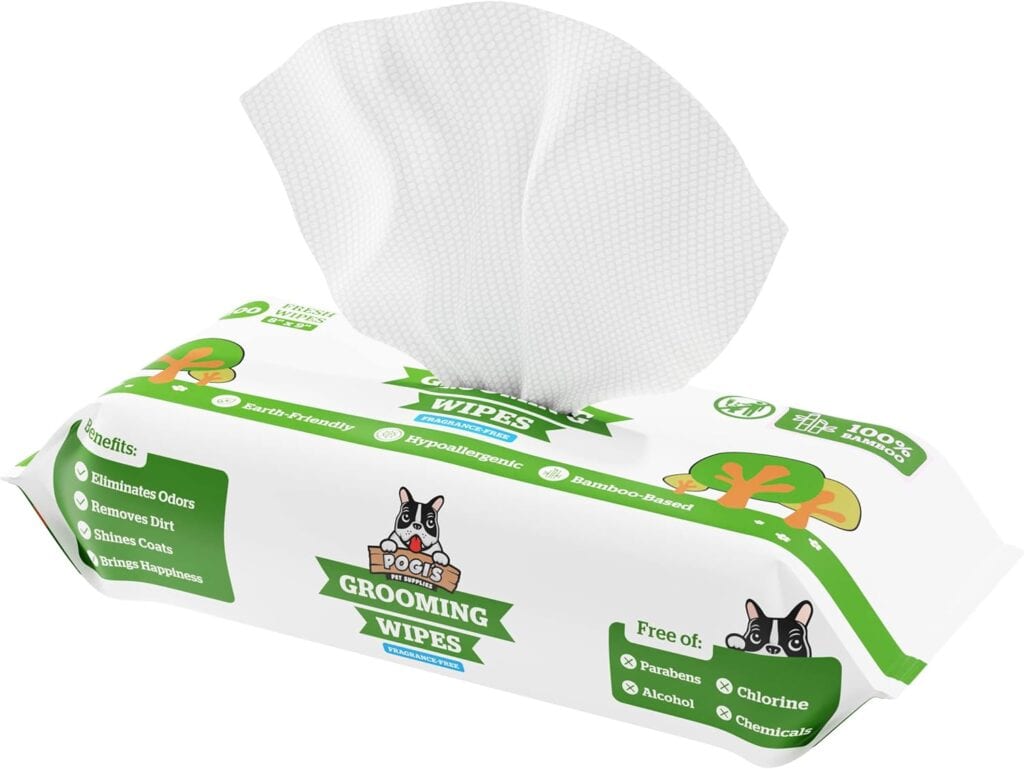
Recommended by Pet Pros
Pogi’s Pet Wipes
27. Toothbrush & Toothpaste
Dental health is often overlooked, but early brushing prevents gum disease and bad breath. Start brushing as a puppy to make it a normal part of their routine.
What You Need:
- A soft-bristled toothbrush or a finger brush for small mouths.
- Dog-specific toothpaste—never use human toothpaste, as it contains xylitol, which is toxic to dogs.
Aim to brush at least three times a week for the best results.

Recommended by Pet Pros
Vet’s Best Toothbrush & Toothpaste
28. Dog Dental Chews
Dental chews help reduce plaque buildup and keep breath fresh, making them a great addition to brushing.
How to Choose the Right Dental Chew:
- Must be size-appropriate for your puppy.
- Shouldn’t be too hard, as it can damage developing teeth.
- Avoid chews with artificial flavors or fillers.
While dental chews help with oral hygiene, they should not replace regular tooth brushing.

Recommended by Pet Pros
Greenies Dental Treats
29. Nail Grinder
If your puppy hates traditional clippers, a grinder may be a better option. It files down nails gradually, reducing the risk of cutting too short.
Why Use a Grinder?
- Creates smooth edges—no more sharp, scratchy nails.
- Helps prevent cracking and splintering.
- Great for dogs with dark nails, where the quick is harder to see.
Introduce the grinder slowly, letting your puppy get used to the sound and sensation before using it on their nails.

Recommended by Pet Pros
Dremel PawControl Nail Grinder
30. Ear Wipes
Ears can trap dirt, wax, and bacteria, leading to infections if not cleaned regularly. Some breeds (like floppy-eared dogs) are especially prone to ear issues.
How to Clean Your Puppy’s Ears:
- Use pre-moistened ear wipes or a vet-approved ear cleaner on a cotton ball.
- Gently wipe the outer ear and just inside, never push anything deep into the ear canal.
- Check for signs of infection, like redness, bad odor, or excessive scratching.
Clean ears once a month or as needed, depending on your puppy’s breed and activity level.

Recommended by Pet Pros
Pet MD Ear Wipes
Cleaning Supplies
Puppies are messy. House training accidents, muddy paws, and shedding are all part of the experience. The right cleaning supplies will keep your home (and sanity) intact.
31. Pooper Scooper
A pooper scooper makes cleaning up after your puppy easier and more hygienic, especially in the backyard.
Why You Need One:
- Keeps hands clean and avoids direct contact with waste.
- Makes yard cleanup quicker and easier.
- Reduces odor by removing waste promptly.
Look for a lightweight scooper with a long handle to avoid unnecessary bending. Some models have waste bag attachments, making disposal even easier.

Recommended by Pet Pros
Pawler Heavy Duty Pooper Scooper
32. Stain & Odor Remover
House training means accidents are inevitable. Regular cleaners won’t fully remove pet odors, which can cause your puppy to keep going in the same spot.
Choosing the Best Stain Remover:
- Enzyme-based cleaners break down urine molecules, eliminating odors at the source.
- Safe for carpets, hardwood floors, and upholstery.
- Works on pee, vomit, and other messes—not just stains.
Even if you think you’ve cleaned up a mess, your puppy’s nose is much stronger than yours. If they can still smell their accident, they’ll be tempted to go there again.

Recommended by Pet Pros
Rocco & Roxie Stain & Odor Eliminator
33. Vacuum
Puppies shed, track in dirt, and scatter fur everywhere. A good vacuum designed for pet hair is essential.
What to Look For:
- Strong suction power to lift pet hair from carpets and furniture.
- HEPA filters to trap allergens and dander.
- Attachments for upholstery, stairs, and hard-to-reach areas.
If you don’t want to vacuum daily, a robotic vacuum can help keep up with shedding and dirt.

Recommended by Pet Pros
BISSELL 2252 CleanView
Puppy Services
Beyond supplies, you’ll need professional support for your puppy’s health, training, and overall well-being. Choosing the right services early on sets your puppy up for long-term success.
34. Veterinarian
Finding a good veterinarian should be one of your first priorities. Your puppy will need vaccinations, check-ups, and preventative care throughout their life.
What to Consider When Choosing a Vet:
- Location—close enough for easy visits and emergencies.
- Experience with puppies and knowledge of your dog’s breed.
- Friendly, patient staff who make your puppy feel comfortable.
- Availability of emergency services or after-hours care.
Schedule your puppy’s first vet visit within a few days of bringing them home to establish a health baseline and discuss vaccinations, deworming, and nutrition.
35. Dog Trainer
Professional training makes a huge difference in raising a well-behaved puppy. Whether you opt for group classes, private lessons, or a board-and-train program, starting early prevents bad habits from forming.
Types of Training to Consider:
- Puppy socialization classes to expose your pup to new experiences in a controlled setting.
- Basic obedience training covering sit, stay, recall, and leash manners.
- Private lessons for customized training based on your puppy’s specific needs.
- Board and train programs for owners who prefer professional, intensive training.
Good training lays the foundation for a well-mannered adult dog, making life easier for both of you.

Raise a Happy, Healthy Puppy!
Unlock the secrets to puppy care with our New Puppy Essentials Bundle. Everything you need in one place!
36. Pet Insurance
Vet bills can add up quickly, especially if your puppy faces an unexpected injury or illness. Pet insurance helps cover costs and provides peace of mind.
What to Look for in a Pet Insurance Plan:
- Coverage for accidents, illnesses, and hereditary conditions.
- Routine wellness add-ons (optional but helpful for vaccines and check-ups).
- A reasonable deductible and reimbursement rate.
- No breed-specific exclusions.
Compare plans carefully—some only cover emergencies, while others include preventative care.
Some pet insurances we like:

37. Dog Groomer
Even if you plan to do most grooming at home, some puppies benefit from professional grooming services, especially breeds that require regular haircuts.
Why You Might Need a Groomer:
- Breeds like Poodles, Doodles, or Shih Tzus need routine trims.
- Nail trimming and ear cleaning can be tricky for new owners.
- Groomers help detect skin issues, parasites, or infections early.
Look for a patient, experienced groomer who specializes in puppies to make the experience positive.
38. Pet Sitter
At some point, you may need to leave your puppy in someone else’s care. A trusted pet sitter ensures your puppy’s routine stays consistent while you’re away.
What to Look For in a Pet Sitter:
- Experience with puppies and knowledge of basic training.
- Positive reviews and references.
- Ability to follow feeding and potty schedules.
A pet sitter can come to your home or keep your puppy at their place, depending on what works best for your situation.
39. Dog Walker
Puppies have endless energy, and if your schedule doesn’t allow for frequent walks, a dog walker can help.
Benefits of a Dog Walker:
- Ensures your puppy gets midday potty breaks and exercise.
- Helps prevent boredom-related behaviors like chewing and barking.
- Provides early socialization with different people and environments.
For high-energy breeds, a daily dog walker can be a lifesaver.

40. Dog Daycare
Dog daycare can be a great option for socialization, exercise, and mental stimulation, especially for puppies with high energy levels or owners who work long hours.
What to Look For in a Good Dog Daycare:
- Experienced staff trained in dog behavior and group play management.
- Clean and safe facilities with supervised play areas.
- A structured schedule with play, rest, and enrichment activities.
- Small, well-matched playgroups to prevent overwhelming shy puppies.
Not all puppies enjoy daycare, so start with a short trial to see how your pup adjusts. Some puppies thrive in daycare, while others do better with one-on-one pet sitting or structured walks.
Final Thoughts
Raising a puppy is exciting, but it comes with a lot of responsibility. Having the right supplies, training, and professional services will make the transition easier for both of you.
With this New Puppy Checklist, you’re fully prepared to welcome your puppy home and start this journey on the right paw.
Want more expert puppy tips? Sign up and get practical advice straight to your inbox!

